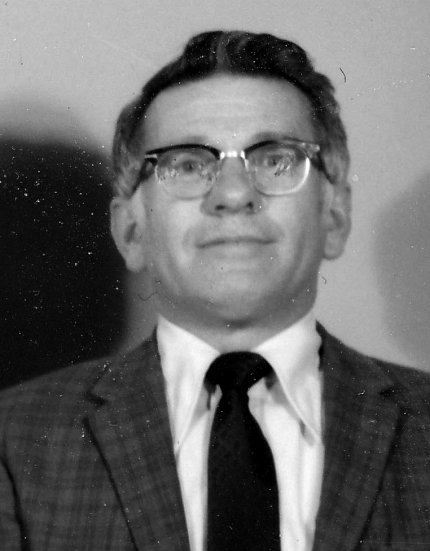NIBIB Mourns Friauf

Photo: Medical Arts & Photography Branch, DRS
Walter “Walt” Friauf, former chief of the electrical and electronic engineering section of the Biomedical Engineering and Instrumentation Program (BEIP), died Oct. 5, at age 93.
Friauf was admired for his sophisticated and innovative circuit designs, numerous publications—including a hardcover book published by McGraw-Hill on Feedback Loop Stability Analysis—and a dozen patents in biomedical engineering. He joined NIH’s former Division of Research Services (DRS) in 1962, becoming a section chief in 1969 and remained at NIH until his retirement in 1995. He won an NIH Merit Award in 1979.
Friauf received a bachelor’s degree from MIT and a master’s degree from the University of Virginia, both in electrical engineering. Before graduation, he and his brother bicycled across the U.S., a feat recounted in a 2014 article titled “Early 20th Century Crossers” in Adventure Cycling.
Early in his career, Friauf worked in the engineering departments of the Santa Fe and Southern Pacific railroads. In the Korean War, he was a platoon leader in the 2nd Engineer Combat Battalion, 2nd Infantry Division. Later, he was a senior engineer and section chief at an electronics firm, where he worked on early transistorized implementations of a seismic system and an analog-to-digital converter.
Among his many achievements, Friauf and Dr. Gerald Vurek of NHLBI’s Laboratory of Technical Development created an electro-optical device in 1971 for the continuous measurement of blood oxygen levels during use of an artificial lung. The instrument was selected by Industrial Research, Inc., in its international competition as one of the 100 most significant technical products of the year.
Friauf, along with two other members of BEIP—Horace Casio and Dr. Stephen Leighton, collaborated with Dr. Victor Sank of the CC and Drs. Giovanni Di Chiro and Rodney Brooks of what was then NINCDS to develop an advanced positron emission tomography (PET) scanner, dubbed the “Neuro-PET” for its ability to produce clearer, more precise images of the brain. Its increased resolution and sensitivity enabled delineation of neurological structures that were not identifiable with other PET scanners.
Friauf and BEIP members supported phase 1 and phase 2 trials of photodynamic therapy (PDT) for treatment of ovarian cancer and mesothelioma, as part of a multi-year collaboration with Drs. Angelo Russo, Tom Delaney, Bill Sindelar and Harvey Pass of NCI.
As a member of the PDT team, Friauf participated in the operating room to treat approximately 100 patients. He and staff provided essential expertise in developing fiber-optic probes for delivery of laser radiation to the abdominal and thoracic cavities. They also implanted photodetectors, connected via an interface to a computer, to record dosages and ensure uniformity across patient cohorts.
“I recall that Walt had a unique, creative way of starting an electronic design,” said Dr. Hank Eden, retired NIBIB deputy scientific director. “Although it was traditional to design a circuit, then design an enclosure for it, Walt reversed the process. He began by thinking of the end product’s enclosure, i.e., its external switches, control knobs, input and output jacks, indicator bulbs, etc., because these encapsulated the device’s desired operational features. Next, he designed the circuit. This insightful initial design step was literally outside-of-the-box thinking.”
Friauf lived in Bethesda since 1966. He and his wife bought an organic hobby farm in central Virginia in the early 1970s, where they spent many pleasurable weekends and vacations with family and friends. His hobbies included pets, collecting and restoring old toy electric trains, building doll houses and contra dancing.
Friauf also was a dedicated family man and was very proud of his late wife Ida and children Ken and Linda. His daughter, Linda Fischetti, followed in his footsteps in working at NIH and became a nurse in the CC pediatric oncology unit. She and her father enjoyed sharing breakfast or lunch at the CC whenever they were able to break away from their research.
